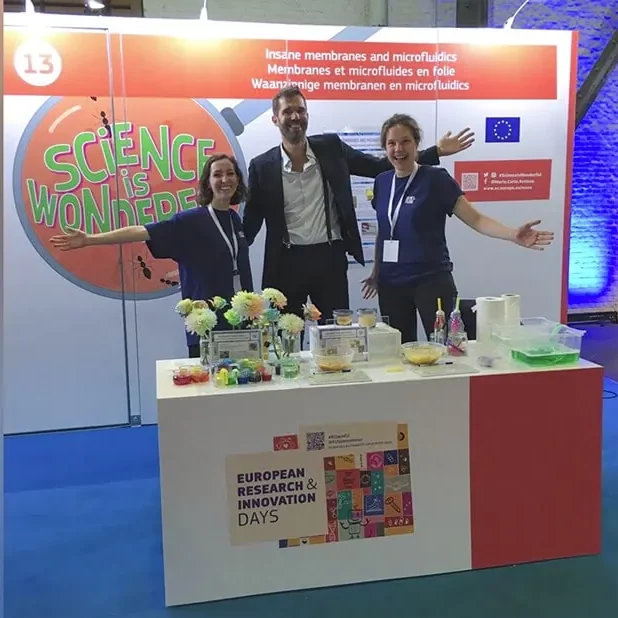Inside flowers, Microfluidics!
Art & science: Explore the movement of water – on the micro-scale!
Yes, art & science exist together.
Water moving through a garden hose or up a straw are common and easy-to-see examples of fluid flowing in a channel (macroscopic). On the other hand, microfluidics is the flow of tiny volumes of liquid (that can be less than a droplet!) through channels that are only a fraction of a millimeter wide.
Such thin channels are abundant in biology and play essential roles in transporting fluid in living organisms, e.g., around the body (capillaries are the smallest blood vessels) and in plants (water travels in tiny channels from the roots, up the stem and to the tips of the leaves).
Flow on the micro-scale can be hard to see! A classic tool to help visualize tiny channels and the fluid inside is food dye. For example, the small channels in plants are visible in the cut end of a celery stalk after soaking in water mixed with food dye. A similar experiment can be done using flowers with some art & science results.
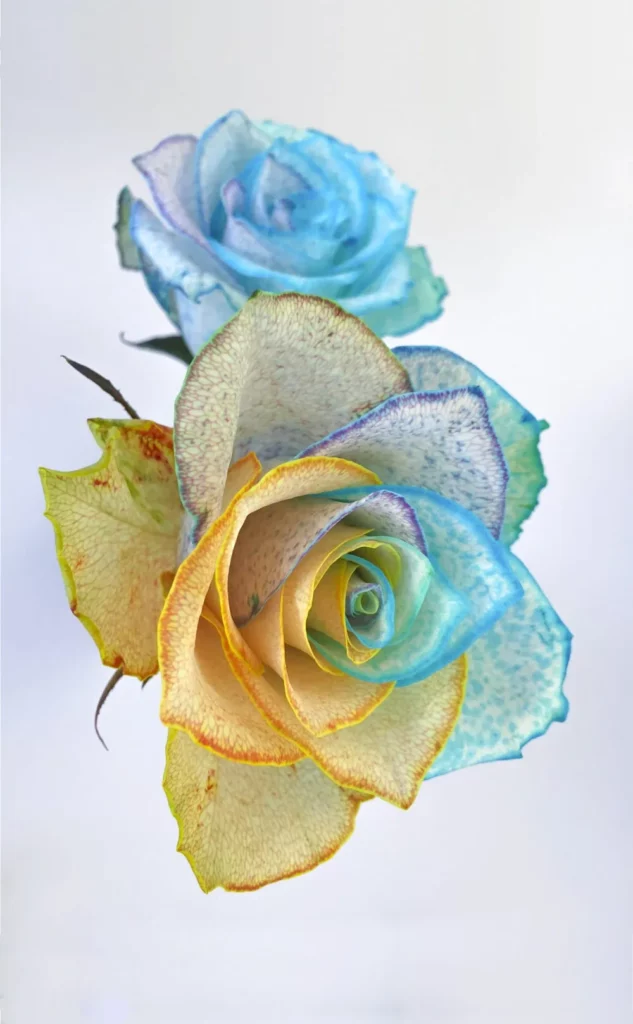
Art & science activity: Microfluidics and multi-coloured roses
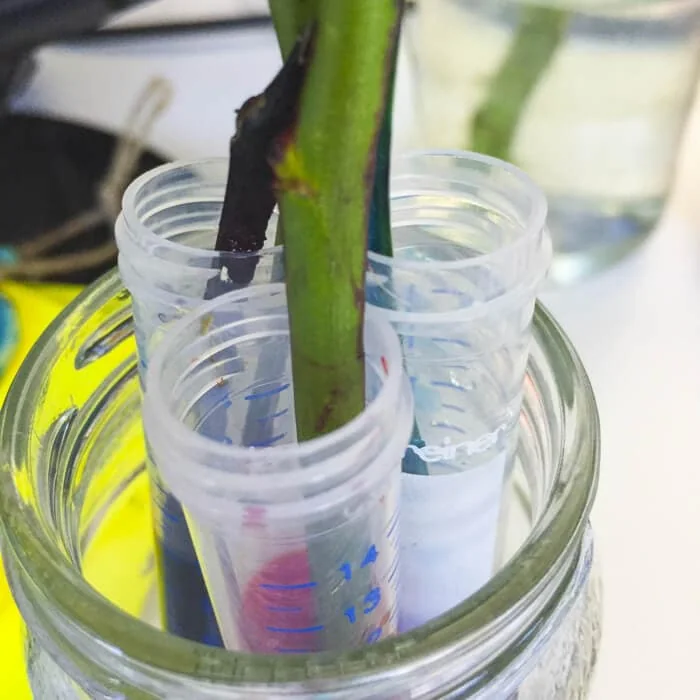
Material
- White flowers
- Sharp blade
- Food colour
- Small jars (2-3 per flower)
- Water
Method
- Add ten drops of food color to 2 small jars of water
- Cut the stem of a white flower lengthways (make the incision straight and about 10 cm long)
- Put each end of the stem into a jar of different colored water
- Observe the petals after 1-2 hours and again after 12-24 hours. What changes do you see?
To think about
- What happens if you make two parallel incisions and insert the ends into three jars of different colored water?
- What will happen to the colored flowers if you transfer them to a jar of clear water (will the color disappear)?
- What will happen to the colored flowers if you transfer them to an empty jar (where does the water go)?
Art & science: Movement of fluid in microchannels
In this experiment, the molecules of food dye will bind to the petals and stain the channels even after the colored water is replaced by clear water. If no water is left in the glass, the flower will dry out as the water evaporates from both the channels’ top and bottom open ends. Dried flowers will remain colored!
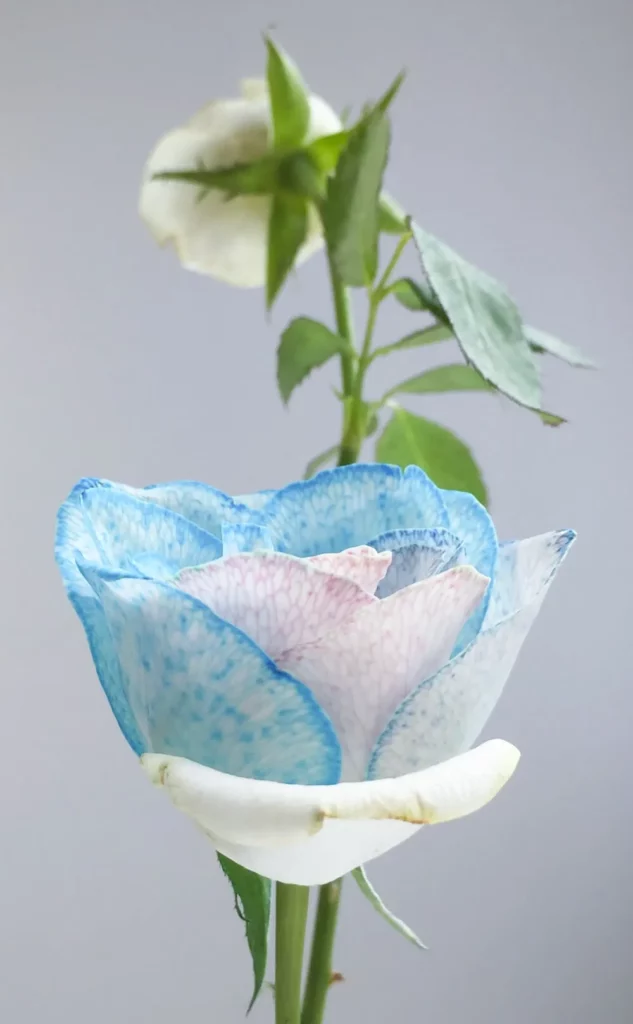
Observation: The petals become colored. The color becomes more robust over time.
Explanation: capillary action in the “veins” of the plant (called xylem for water transport), a network of thin, straight channels that carry water from the roots to the leaf tips.
How does liquid move in channels? Forces drive fluid flow. Common examples include gravity (water in a stream flows downhill, and the moon’s gravitational pull causes tides on Earth) or external pressure (as in the case of a garden hose or a straw). In plants, water movement occurs by capillary action.
Capillary-driven flow is water movement up thin tubes due to a combination of molecule adhesion and cohesion. Adhesion describes the property of the liquid molecules sticking to the walls of the channel.
Cohesion is the ability of molecules of the same type, e.g., water, to stick to each other. In plants, this directional flow is called transpiration and is aided by evaporation at the open ends of the channels in parts of the plant that are above ground.
What if the channel is not a tube?
The microfluidic movement must not be guided through a classical tube or trough. Materials with wicking properties, like paper towels or the hem of your jeans in the rain, will do the job! This experiment explores the movement of water through micropores made by networks of closely woven fibers.
Art & science activity: Walking rainbows
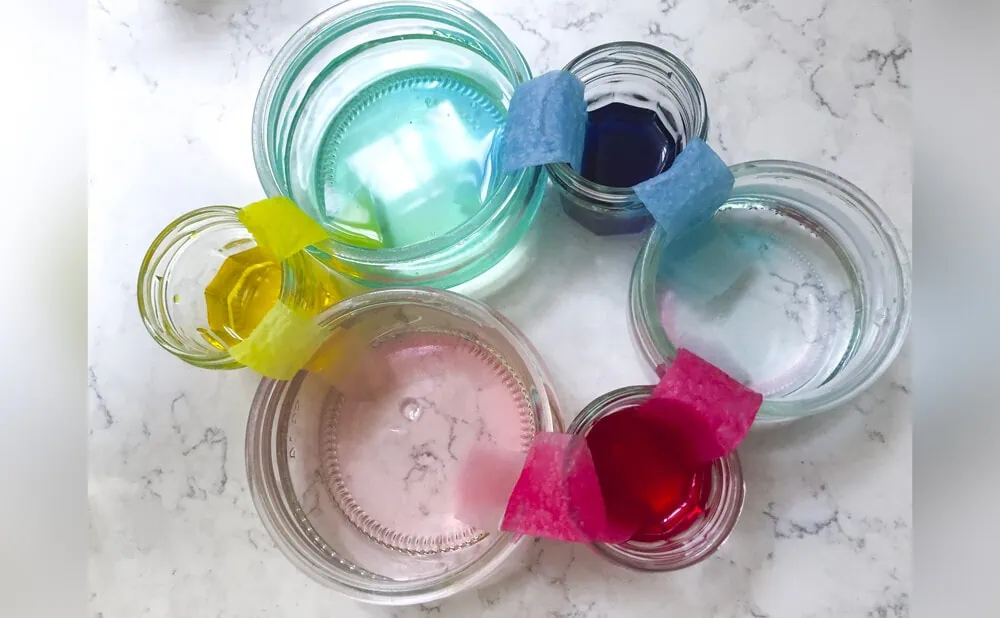
Material
- Small jars (3)
- Food colour
- Paper towel strips
- Water
Method
Art & science: Movement of fluid through micropores
Observation: movement of colored water up the paper and into the jars of clear water. After a time, the clear water will turn into a mix of the two primary colors.
Explanation: (paper microfluidics) The porous network of fibers that makes up the paper acts like a wick to absorb water from a wet area to a neighboring dry area. The dye molecules (color) are dissolved in the water and are mobile and free to diffuse through the liquid to an area of higher to lower dye concentration. The two primary colors are mixed by diffusion in the jar to create a secondary color (e.g., mixing yellow and blue makes green).
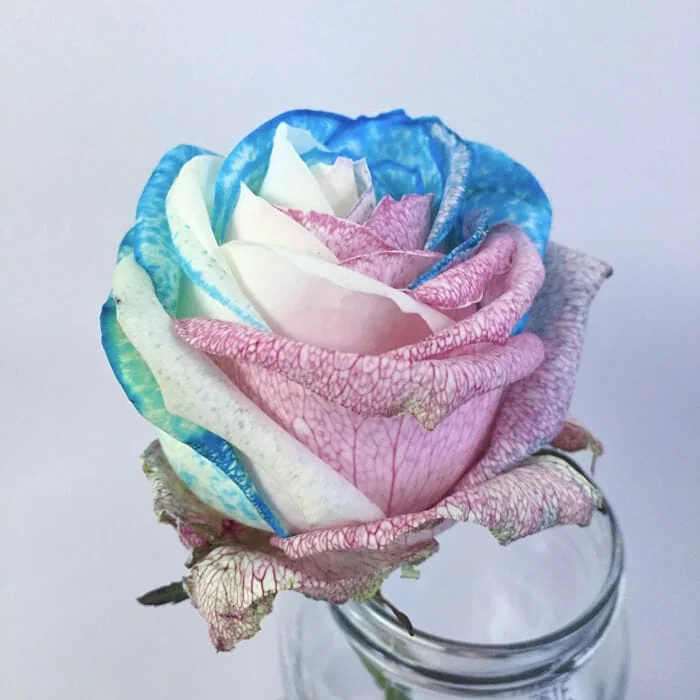
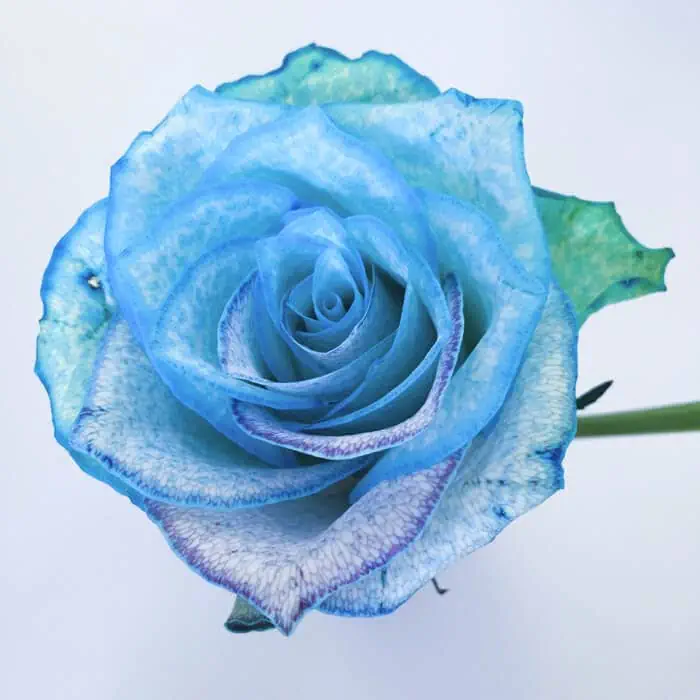
This art and science project was presented during the European Research and Innovation Days. The European Commission’s first annual policy event brought together stakeholders to debate and shape the future research and innovation landscape.
This page was written by Lisa Muiznieks, PhD
Marie Curie H2020 Individual Fellow. Microfluidics Innovation Center.
